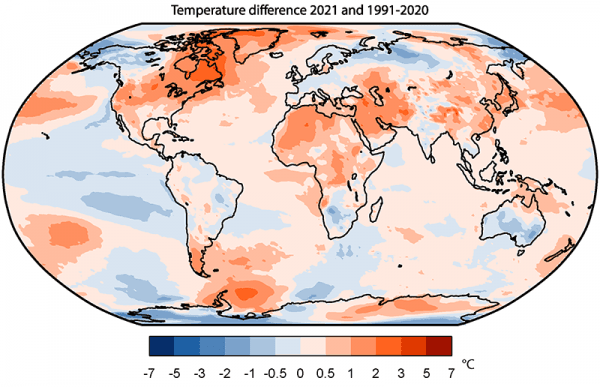2021 was the fifth-hottest year on record and close to 1.2 degrees C (2.1 degrees F) warmer than the preindustrial average, according to an analysis from the European Union’s Copernicus Climate Change Service. The last seven years were the hottest ever “by a clear margin,” the analysis found, thanks to rising concentrations of greenhouse gasses, which hit new highs last year.
“2021 was yet another year of extreme temperatures with the hottest summer in Europe, heatwaves in the Mediterranean, not to mention the unprecedented high temperatures in North America,” said Carlo Buontempo, director of the Copernicus Climate Change Service. “These events are a stark reminder of the need to change our ways, take decisive and effective steps toward a sustainable society and work towards reducing net carbon emissions.”
The West Coast of the United States, northeast Canada, Greenland, and parts of north Africa and the Middle East saw the highest above-average temperatures. Alaska, Australia, Antarctica, parts of Siberia, and much of the Pacific Ocean saw the most below-average temperatures.
Concentrations of carbon dioxide hit 414 parts per million in 2021, while concentrations of methane, a more potent but shorter-lived heat-trapping gas, reached 1876 parts per billion, the highest levels ever recorded, according to a preliminary analysis of satellite data from the Copernicus Climate Change Service and Copernicus Atmosphere Monitoring Service. Wildfires, particularly those in Siberia, were a significant source of carbon pollution.
Read more at: Yale Environment 360
Average surface temperature in 2021 relative to the 1991–2020 average. (Photo Credit: COPERNICUS CLIMATE CHANGE SERVICE/ECMWF)


